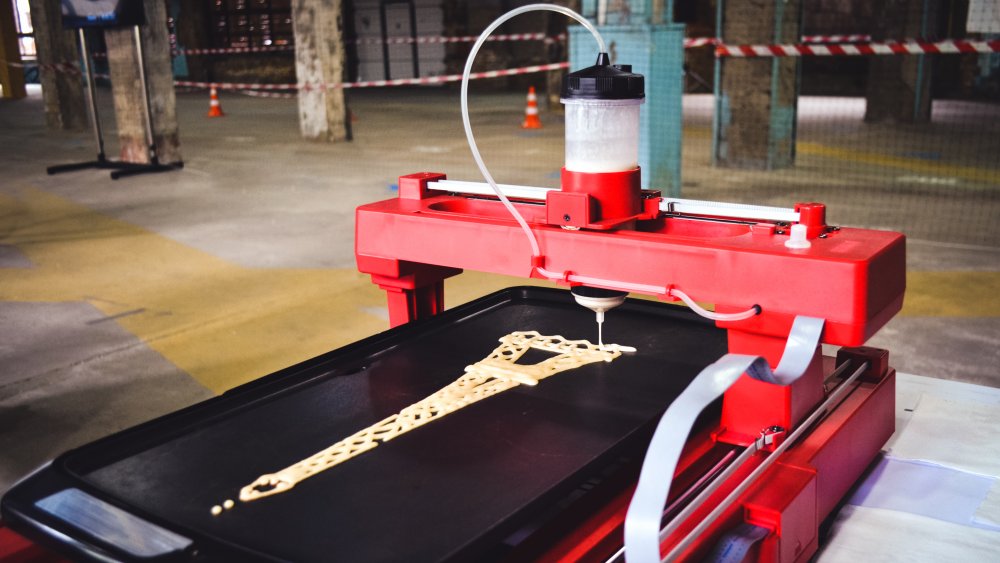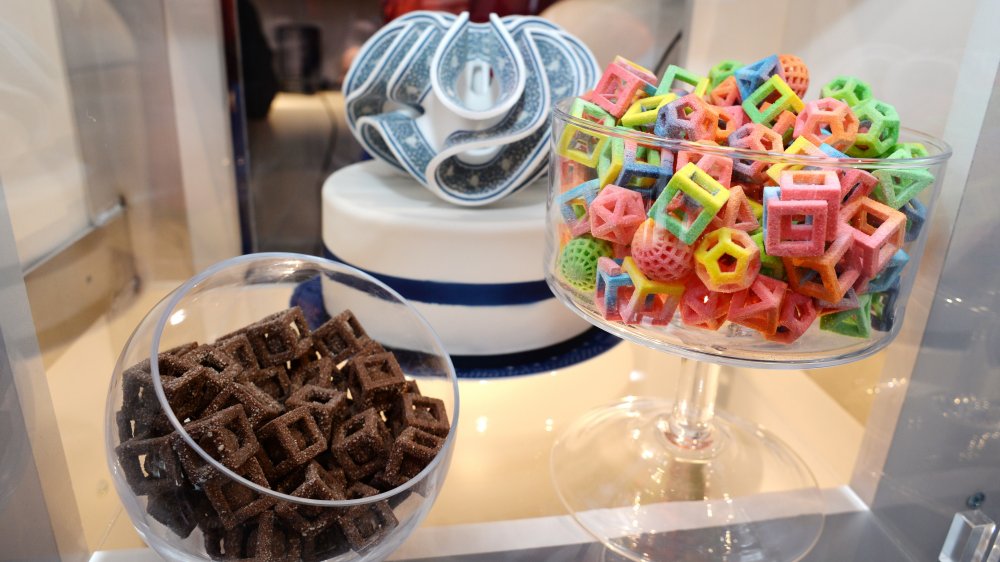The Truth About 3D Printed Food
Those who have seen or experienced 3D printing might associate it with objects that are inedible, like scaled models, design mock-ups, medical equipment, or even modest homes. Videos have circulated on social media showing just what 3D printing can handle so far in the tangible world. Food is now a part of the fad, and it is quite possible edible 3D printing will have a place in the culinary world soon (via ANIWAA).
If you are not familiar with the concept, 3D food printers essentially heat up edible materials, like sugar- or chocolate-based ingredients. It then builds the design from a pattern or blueprint on the plate. The printer draws or outlines the design that has been loaded or programmed and continues to build it using multiple layers until the final 3D structure is standing — and ready to eat.
Chocolate is one of the very best ingredients for 3D printing because of the food's natural physical properties. Because chocolate melts and cools easily, it is simple to make beautiful desserts using a 3D printer without altering the taste or flavor of the chocolate. Sugar candies are also easily printed, and some types only need water and powdered sugar which can be flavored with vanilla, apple, mint, cherry, and tons of other flavors.
How 3D printed food might change how we eat
Beyond candy and sweets, there are other possibilities in the world of 3D printing. Some companies are already using 3D printers at events to impress people with the easy customization of food. 3D printers can cook pancakes with your face on them, squeeze your likeness in mayonnaise onto a burger, or design your own shape of pasta. For SXSW in 2014, Oreos could even be customized with any guest's choice of filling color.
There are tons of applications for 3D printed food, even if it isn't always in the gourmet world — which some believe would invade chefs' territory (via Disruption Hub). According to ANIWAA, 3D printers could be used to print meat and even organic food in a sustainable way. The publication even reported that 3D printers could be the future of food for astronauts because the edible ingredients can be preserved in plastic bags for up to 30 years.
Printing food is already being put into action in some places, too. The European Commission has begun using smooth food concepts in more than 1,000 care or nursing homes. That means nutritional needs on patients are recorded and sent to a local food prep location. An edible QR code is printed onto the plate, frozen, delivered, and then heated for the patient to eat (via Tech Republic).
It seems the potential for positive uses of 3D printed food is endless.

